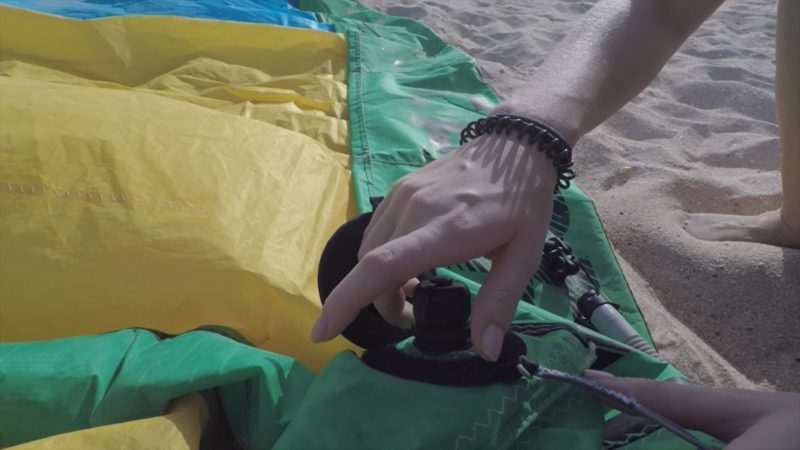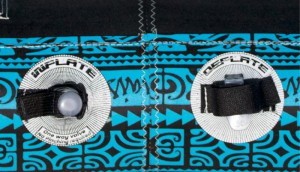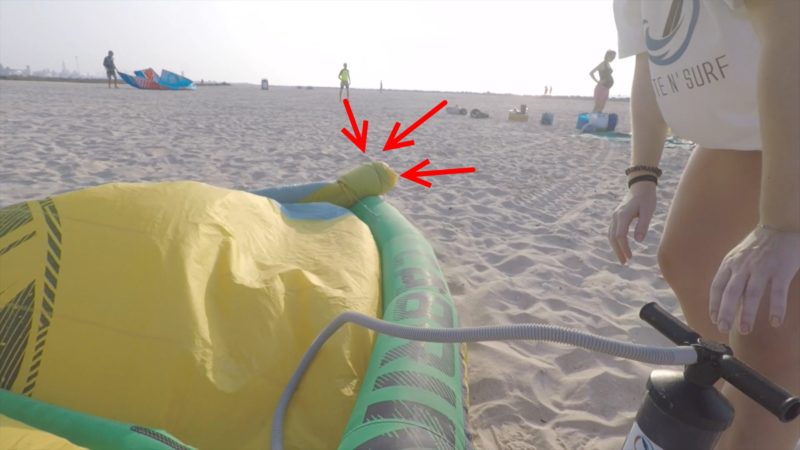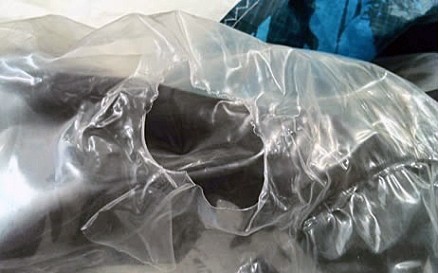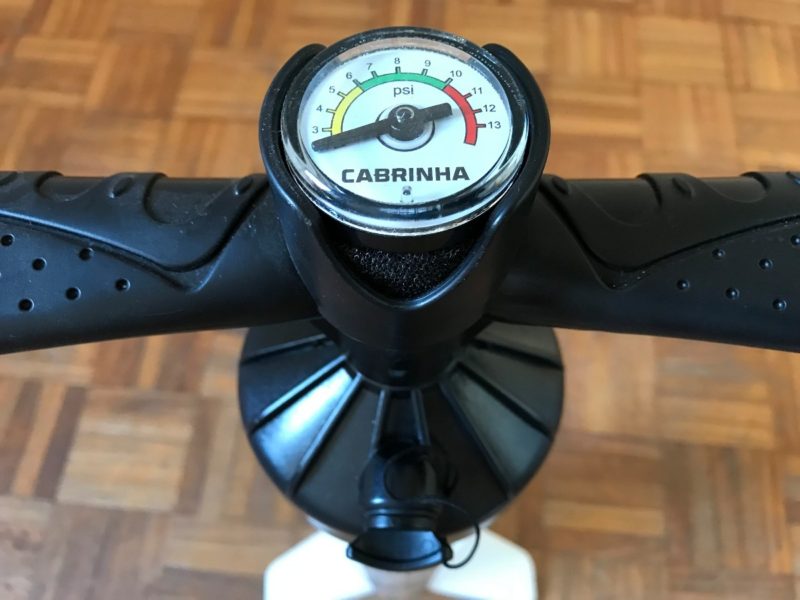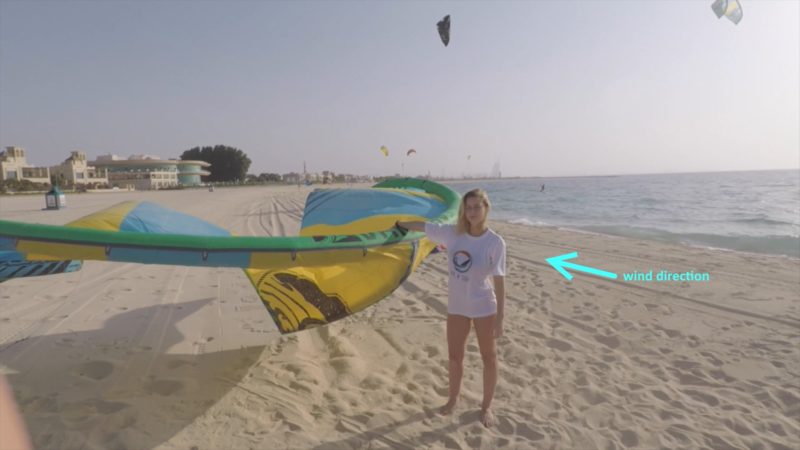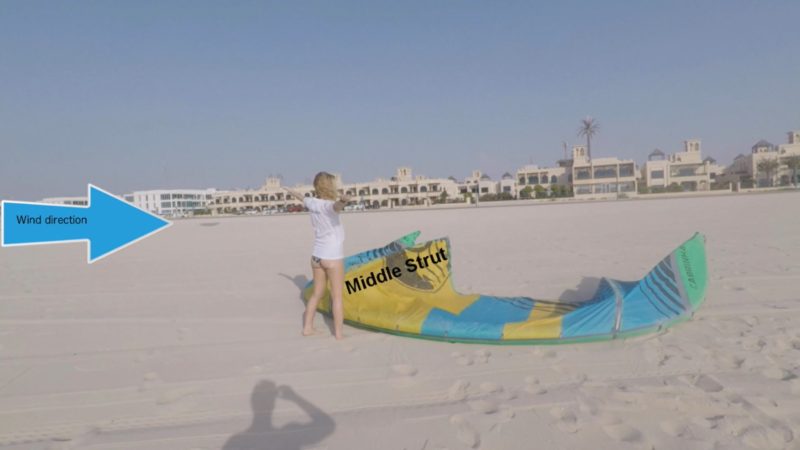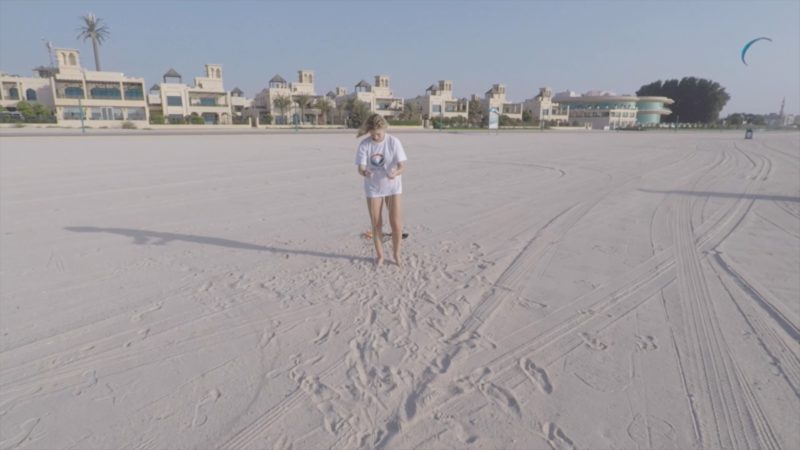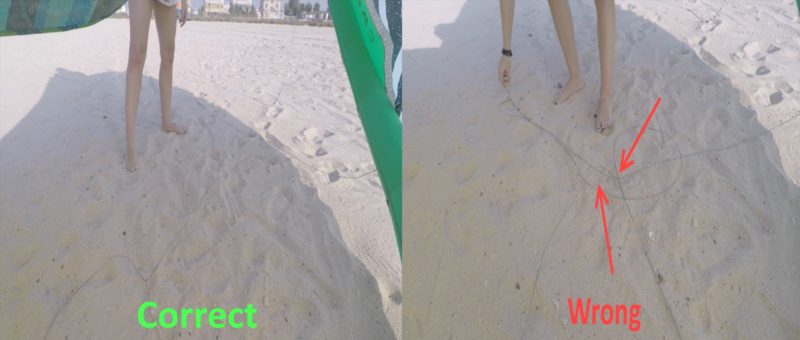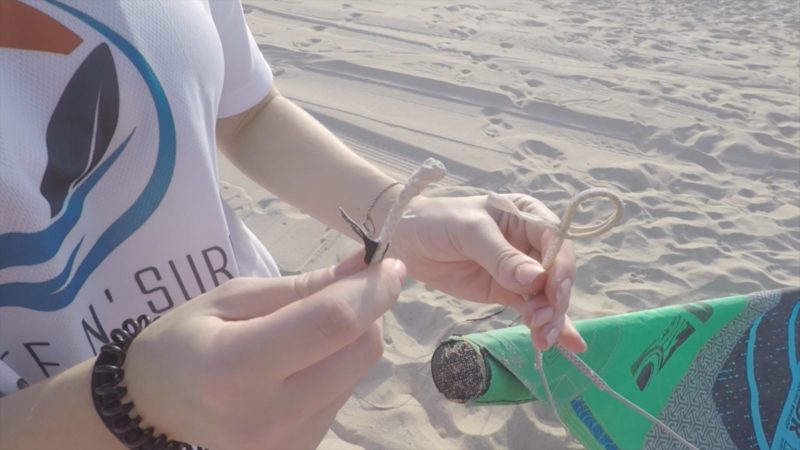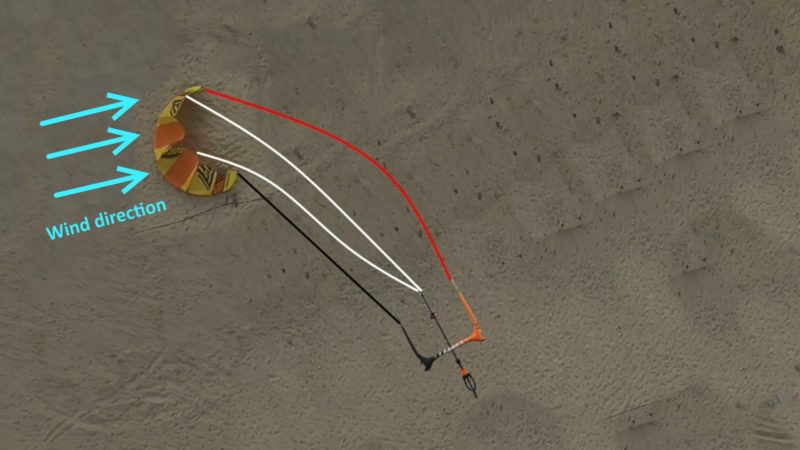Kite surfing basics : kite setup
This kite surfing tutorial will explain in details the basics on how to setup your kite surfing equipment on the beach before starting your session.
Note: Use these videos and tutorials as a way to review your learning or possibly a refresher. We do not recommend you try any of these on your own, it is best to learn from a trained professional. Kitesurfing is an extreme sport that requires extensive safety training. If practiced under the wrong conditions, may lead to serious injuries or death.
Wind Direction
First you need to establish the wind direction, as explained in our previous tutorial related to wind window understanding the wind and establishing the wind direction plays the most important role during your whole kite surfing experience in Dubai and anywhere around the world.
Unfold the kite with the leading edge upwind, You can also unroll it to make your life easier.
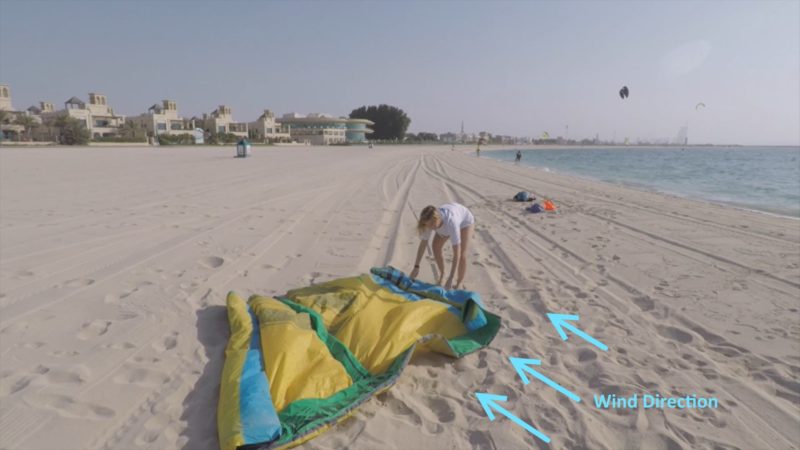
Now connect the pump to the kite in the middle of the leading edge, you will find some loop to attach the pump to the kite this will stop the kite from blowing away during inflation. Kite boarding manufacturers use different pump attachment system but all of them have the same scope to keep the kite from flying away while pumping your kite as you will have both hands busy with the kite pump during inflation.
Inflate and deflate valves
In the center of the leading edge, you should also find the inflate and the deflate valves. You may have a single valve for both. Kite surfing equipment manufacturers use different inflating and deflating systems. Most of the new kite surfing inflating valves use the sprint inflation valve that it’s used to inflate and deflate the kite from the same place by using the NRV (Non return valve) technology. The new kite inflation valves made kite pumping much easier due to the bigger size of the valve (less resistance).
If you have a separate deflate valve like the ones in the below picture. Make sure to close the deflate valve (even if it seems obvious but many times beginners they tend to forget the valve open). Some brands have more than 1 deflate valve where the second valve is located on the tip of the kite so make sure that one is even closed.
Pump cleaning
Clear any sand or dirt inside the pump if you don’t make a habit of this during and after your kite surfing lessons, as sand can accumulate inside your kite bladder over time. kite pump pipe can be cleaned very easily by pumping in the space a few times and this will allow to discharge any sand stuck inside the kite pump
When attaching the hose to the inflation valve it is important to use a light grip to avoid putting too much tension on the kite valve, you can now inflate your kite. In case you didn’t unroll your kite in the beginning, then while pumping the kite should unroll smoothly make sure to observe for any twists or tangles and remove before you continue inflation.
We have seen it happening so many times at the beach especially with kite surfers rushing to get into the water and trying to get on the water as fast as they can or in case of beginners who are not very experienced and don’t notice this problem.
If the kite surfer keeps on pumping while the leading edge is twisted this might cause the kite bladder to explode and we have seen it happening and happening many times on the beach.
From previous experience this kind bladder damage can be repaired easily and can reliable as it doesn’t reach the bladder edges but still it cannot be repaired on the spot and for sure this will cause a lot of disappointment especially if you skipped work just to go kite surf.
Pumping pressure
Most of the kite surfing pumps are equipped with a pressure Gauge that you can use as a reference to pump your kite at the requested pressure.
Most of the kite pumps pressure gauge have 3 different colors that you can use as a reference while pumping, the recommended pumping pressure varies from one kite surfing equipment manufacturer to another and differ from one kite size to another (For example you need to pump the bigger kite at a less pressure compared to a smaller kite size). Usually the green zone on the pump is where we want to reach while pumping around 7 PSI.
The recommended inflating pressure of your kite is usually provided to you by the kite surfing equipment manufacturer you got your equipment from but still most of the time you can feel when there is enough pressure by gripping the leading edge and you could also do this by attempting to bend it near the wingtip or by flicking the kite it should make a sound. If it makes the sound in a lower pitch, it means its under-inflate, if higher pitch means it’s over inflated.
Very important is to inflate the right pressure, as under inflating the kite will cause you a lot of troubles during your kite surfing lessons and during your kite surfing session when you will become an independent kite surfer.
The main problem caused by under inflation is the big risk related to kite collapsing on it’s self when it fall inside the water making the kite very hard to relaunch and that might cause panicking for the beginners while they are on their own.
Another problem of under inflation can be when diving the kite, you will notice the kite leading edge is not rigid and the kite is not responsive that can cause plenty of problems related to kite control (A special tutorial will be dedicated to this part)
Over inflation of the kite can cause the biggest nightmare for a kite surfer, THE LEADING EDGE EXPLOSION! If it happens while inflating your kite on the beach it can be very disappointing but if it happens while you are kite surfing if the kite hits the water very hard that can be dangerous especially if you are kiting faraway from the shore!
Once inflated remove the hose and close the valve. Now hold the kite with one hand and detach the pump leash. The kite should float effortlessly in your hand because it is maintained at a single point. It should line up with the wind and not pull much.
To store a kite on the ground, move towards a wingtip and flip the kite over. The easiest way to do it is by flipping maintaining the leading edge always facing the wind direction and hold the leading edge with one hand from the top and one hand from the bottom lift the kite from one side so the wing tip will touch the ground and try to walk with the kite by sliding down your hand on leading edge while walking .
Don’t try to flip the kite up side while standing in the same position unless you have a very small kite, here in Dubai we use mostly big kite boarding equipment with average size17 to 12 m2 most of the time and this techniques works very well.
The Struts should be lined up with the wind as the wind travels over the kite, its help to press the kite into the ground keeping kit in position. In stronger winds, you may need a weight without sharp edges such as sand to help secure the kite.
Lines Setup
Now the kite is inflated we unroll the lines start on the downwind side of the kite and make sure all four lines unroll together and head downwind as you unroll the lines. This is the recommend procedure for the lines setup to minimize the risk of committing errors.
During many years of experience we have noticed that many beginners tend to make the same errors during their kite surfing lessons and the reasons we do it for will be explained in details during the kite launching and landing tutorial.
When all the lines are clear in the bar, you can walk a little further downwind to make sure the lines lay straight; this will help a lot later while separating the lines. Now place the bar correctly on the ground.
And here come one of the most confusing part of all your kite surfing lessons you probably already know we fly a kite with the colored side of the bar on the left when the wind is to our back.
Now as we are setting up the kite from the downwind side this will now mean that colored side of the bar is on the right. However, to make your life easy, you can look at the bar as if you were flying a kite and as usual the bar will have the color side on the left and this result the best way to avoid any kind of confusion. As explained in our previous tutorial you always need to refer to the wind direction as the main variable while kite boarding.
Most bars also have a logo when the bar is right-side up so as it will now be upside down; the logo will be face down in the sand. To separate the lines, stand with your feet dividing the steering lines from the center lines, pick up the steering lines one in each hand, and take one center line in each hand as well.
As walking upwind, it should separate all of the lines. Upon reaching the end spread each of the lines out in order with plenty of space between them.
Now, we have four line and four points ready; Most kite surfing gear manufacturer use the 4 lines kites system and some others use 5 or even 6 the reason behind that will be explained in details in another tutorial.
Now you can start to connect, On your kite, there should be four points, two in the wingtips for the steering lines and two on the inside for the center lines. You should check that any bridle system is not tangled.
This problem can result one of the most dangerous situations during kite launching as one of your power lines result to be shorter and this means the kite will be pulling to the side of the shorter line (for example the left middle line is tangled that means it’s shorter and if you are launching your kite from 3 o’clock this will result in fast movement of the kite from 3 o’clock to the other side of the wind window and crossing the power zone and this can result in a very dangerous situation that can be avoided just by dedicating less than 1 minute to check the bridles.
When connecting your line to the kite on one side, you should find a loop, and on the opposite side, you should see one or more knots. The function of the different knot will be explained later in another article.
To connect start with the loop and push immediately before the loop through the hole like so this makes a self-tightening noose known as a larks head. Slide the locks head over the middle do not slide it close. Push tightly to make sure it stays in the position note, the harder you pull, the tighter it should hold.
After that, connect the rest of the lines try to be systematic to avoid mistakes. And here you will notice that middle lines and steering lings knots are inverted. So in case the steering lines of the kite has a loop where you need to make the larks head then then the middle lines (power lines) has a knot and not a loop. The reason behind that is to avoid connecting bar steering lines to the kite middle lines as a precaution for safety.
Another precaution that it has been taking by the all kite surfing equipment manufactures is to color kite steering lines and bar steering lines with the color(for example red goes with red and black goes with black) and some other brands use even to put the name on the line (Red, Black, white…)
Hence, the setup is complete, lay everything out. If your Centre lines across it is usually not an issue as most kites have a swivel for the center lines on the bar. You should, however, make sure your steering lines are not crossed. Go back to the bar and lift up each steering line, you should not see any order lines or objects hanging from them.
You may not have enough room to put your lines directly downwind; you can put your lines at an angle as long as the bar ends up some distance downwind of the kite.
A detailed explanation of the reason behind this will be covered in another of our article.
See you on the water!



